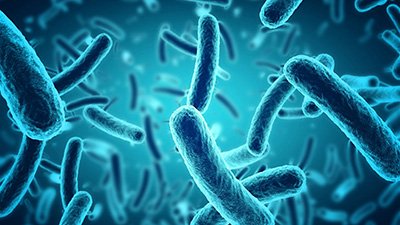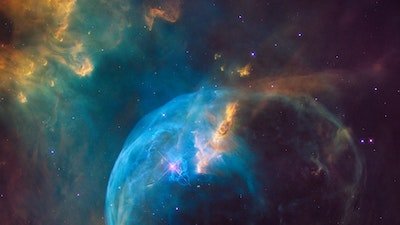
“Non-evolution” of the Appearance of Mitochondria and Plastids in Eukaryotes
Challenges to Endosymbiotic Theory
Mitochondria are sometimes called the “workhorse” of the cell, as they are responsible for producing the majority of the energy molecule ATP.
Endosymbiotic theory was first developed and popularized by Lynn Margulis in the 1970s. The theory proposes that mitochondria and plastids (e.g., chloroplasts) were originally bacteria that were engulfed by two separate ancestral cells but not digested. The reason for this is the “similarity” between mitochondria/plastids and bacteria/cyanobacteria. These organelles share some characteristics with bacteria/cyanobacteria, including circular DNA, division by binary fission, and membrane and ribosome similarities.
Mitochondria are sometimes called the “workhorse” of the cell, as they are responsible for producing the majority of the energy molecule ATP. Mitochondria are found in animal, human, plant, protist and fungi cells. Mitochondria are believed to have originated from the endosymbiosis of proteobacteria in an ancestral cell. Plastids are the place where photosynthesis occurs. Photosynthesis is the process of converting light energy to energy molecules that allow an organism to make sugars. Plastids are found only in plants and protists. Endosymbiotic theory proposes that primary endosymbiosis of cyanobacteria by an ancestral cell gave rise to algae and plants and secondary endosymbiosis of algae by protists gave rise to photosynthetic protists.
The following quote gives us a picture of how evolutionists believe plastid endosymbiosis may have occurred:
Endosymbiosis may be initiated when a phagotrophic protist engulfs an alga as prey. The protist fails, however, to digest the alga and thus accidentally retains it within the cell like a toothpick that cannot be swallowed [known as the “stuck-in-the-throat” model].1
This idea does not sound very credible, especially considering this next quote, which states what has to be accomplished in order for the organism that will become the plastid (the same could be said for the mitochondria) to become a permanent part of the cell:
This process of endosymbiosis requires genetic integration between the host and symbiont; vast amount of genes are transferred to the host nucleus, and protein transport machinery is established to transport products back into the plastid.1
How simple would this be to accomplish?
Complex relationships between cells and organelles
Organelles such as mitochondria and plastids have extremely integrated and complex relationships with other parts of the cell where they reside. One of those relationships is the ability to transport organelle proteins that are encoded by genes in the nucleus and formed in other parts of the cell back into the organelle where they are needed for the organelle’s proper functioning. Endosymbiotic theory proposes that the genes for organelle proteins got transferred to the nucleus as part of a reduction process by the bacteria/cyanobacteria as they became a permanent part of the cell. The problem for the cell was that it then had to “evolve” transport pathways to bring the organelle proteins (made in the cell) back to the organelle. The transport pathway is composed of many proteins that work together to bring the protein into the organelle. Each organelle has specific pathways (which differ between organelles) to accomplish this and there are typically several different pathways needed to bring a variety of proteins into the organelle. For example, five pathways have been identified so far for transport of proteins into mitochondria.2 Each pathway is composed of several proteins; some are shared among the pathways, while others are unique to a pathway.2 The case is similar for plastids.
Since mutations are the only “tool” evolution has to “work” with, and since evolutionists have yet to show how new information could be added to a genome without design, mutations cannot account for the origin of these protein-transport pathways. If there is no way to form these pathways, then the organelles would become obsolete once they started transferring their genes to the nucleus. Furthermore, if there was no pathway to return the proteins to the organelle, then the organelles would stop functioning and would no longer be selected for because they did not serve a purpose.
Intermediates not found
Unlike plants, animals and humans, where fossil evidence is used to formulate evolutionary relationships, bacteria and protists are accepted to have living “intermediates” that help elucidate these relationships. For many years, the eukaryotic protists Archezoa, a now abandoned classification, were thought to lack mitochondria and to have branched off before the mitochondrial endosymbiotic event.3 However, recent findings have shown that Archezoa have mitochondria-like structures called mitosomes or hydrogenosomes.3 They share similarities with mitochondria, such as membrane structure and protein transport machinery, but differ in function.3 So the search goes on for a eukaryote without mitochondria. But even if one were found, that still would not prove common ancestry and a later endosymbiotic event. Similarity is at best merely consistent with common ancestry. It may just be a different species of eukaryote that God designed in such a way that it does not require functioning mitochondria (prokaryotes don’t have mitochondria and yet make a sufficient amount of ATP).
In a classic case of circular reasoning—they developed the stages after studying the organisms!
Scientists claim that Hatena, a recently discovered protist, is a “snapshot” of an endosymbiotic event that has not yet reached completion. This organism has a unique life cycle. It contains an algal symbiont, but when it divides only one of the daughter cells gets the alga.4 The other daughter cell has a feeding apparatus that allows it to engulf an alga.4 It only engulfs a certain species of alga, and the alga retains many of its cellular components, such as a nucleus4 (these are not found in plastids where endosymbiosis is thought to have reached completion). In a news article about the findings, one biologist commented, “Whatever you need to make that [the algal symbiont] a permanent part is not occurring here. Maybe in a hundred millions [sic] years it will figure it out.”5 Scientists with a belief in evolution have postulated a pathway for plastid endosymbiosis. There are four main stages, and evolutionary scientists believe they have found modern organisms in each of these stages (Hatena fits between stage I and II).1 So how did they develop these stages in the first place? In a classic case of circular reasoning—they developed the stages after studying the organisms! Hatena was assumed to be a more primitive stage; hence, it was classified as an intermediate between the first two stages. There really is no evidence for their idea that Hatena is actually in the middle of an evolutionary sequence for plastid endosymbiosis.
Conclusion
Although mitochondria and plastids share some similarities with bacteria/cyanobacteria, that alone is not evidence that the organelles originated from them through endosymbiosis. Again, the question can be asked, common ancestor or common designer? In addition, the endosymbiotic events do not help us understand the origin of such complex processes as ATP formation or photosynthesis in bacteria/cyanobacteria.
Biblical creationists are often accused (and rightly so) of using the Bible as their foundation and interpreting scientific evidence in light of it. Many evolutionists claim we should go where the evidence leads. What they fail to recognize is that they, too, have a foundation—materialism—and their interpretation of the evidence will only support that foundation. The difference is that the Bible is absolute truth and man’s ideas are not.
Footnotes
- Isao Inouye and Noriko Okamoto, “Changing Concepts of a Plant: Current Knowledge on Plant Diversity and Evolution,” Plant Biotechnology 22, no. 5 (July 25, 2006): 505–514, doi:10.5511/plantbiotechnology.22.505.
- Harvey Lodish et al., Molecular Cell Biology, 5th ed., W. H. Freeman Company, 2004.
- T. Martin Embley and William Martin, “Eukaryotic Evolution, Changes and Challenges,” Nature, 440 (March 30, 2006): 623–630, doi:10.1038/nature04546.
- Noriko Okamoto and Isao Inouye, “A Secondary Symbiosis in Progress?,” Science 310, no. 5746 (October 14, 2005): 287, doi:10.1126/science.1116125.
- Tracy Staedter, “Marine Microorganism Plays Both Host and Killer,” Scientific American, October 14, 2005, https://www.scientificamerican.com/article/marine-microorganism-play/.

Answers in Genesis is an apologetics ministry, dedicated to helping Christians defend their faith and proclaim the good news of Jesus Christ.
- Customer Service 800.778.3390
- Available Monday–Friday | 9 AM–5 PM ET
- © 2026 Answers in Genesis



